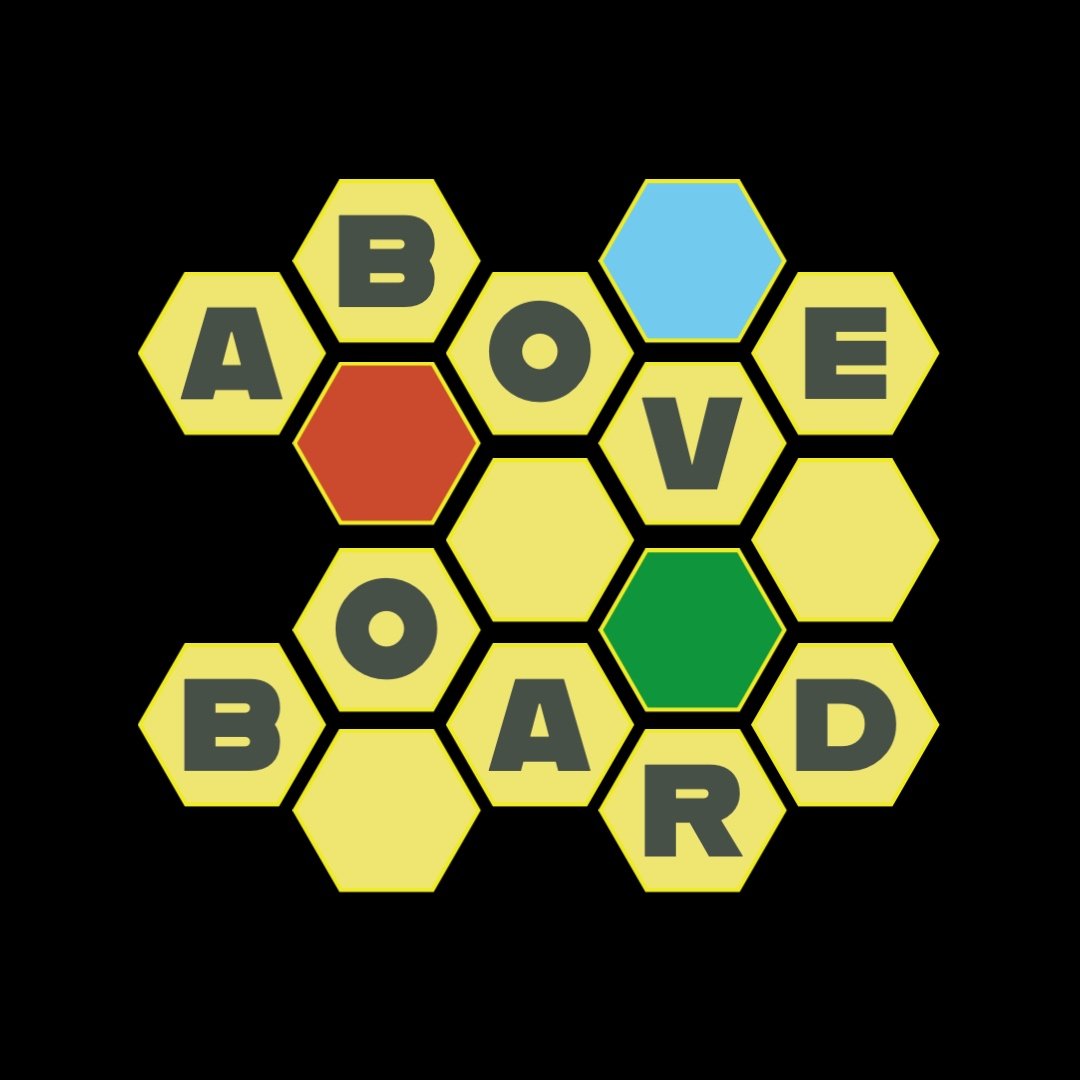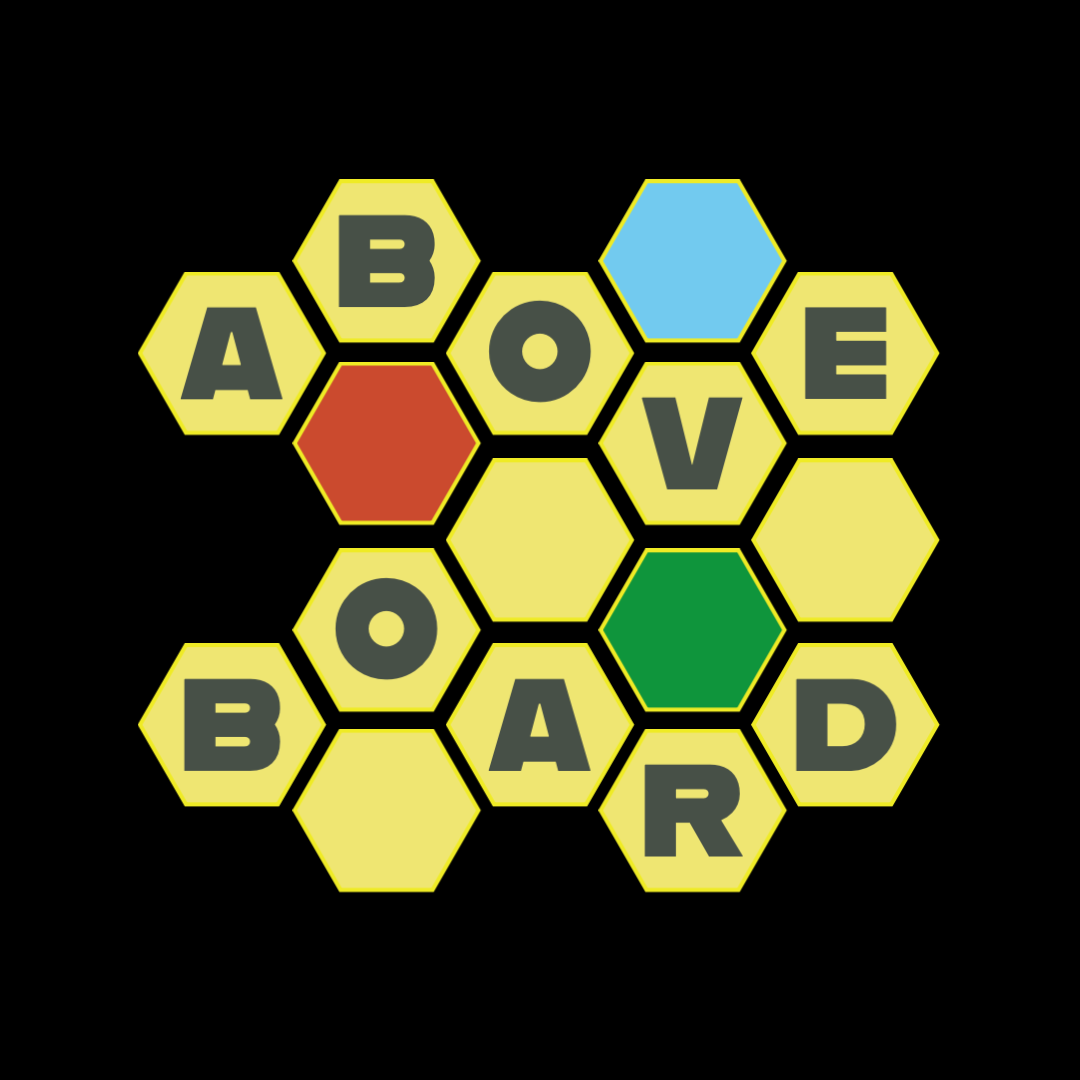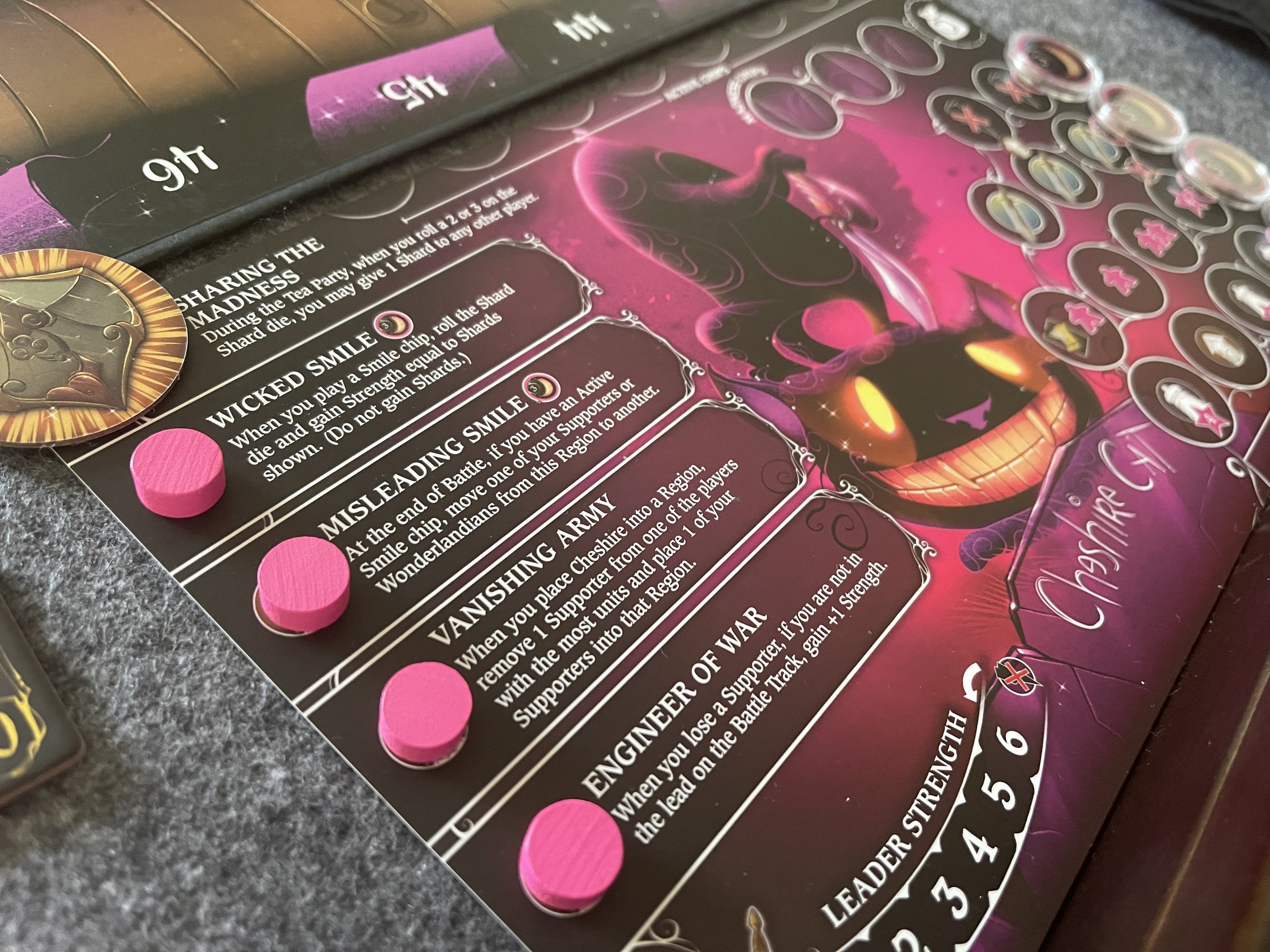Wonderland’s War Review
The unthinkable has happened, Wonderland is becoming…. sane! It’s madness! Five factions battle for control of Wonderland’s realms, which will be the one to reshape this world in their own image and which will fall deeper into the despair of sanity?
2-5 Players 45-125 mins Age 13+
Designers: Tim Eisner, Ben Eisner, Ian Moss
Artist: Manny Trembley
Publisher: Druid City Games
Every Adventure Requires a First Step.
Alice in Wonderland has been adapted, reworked, updated, and reimagined more times than I can realistically mention in this review. Some of these have been well received, such as American McGee’s Alice in Wonderland, others, not so much….
Ugh!
While there have been several board games using the Wonderland IP, few have been so gloriously produced as Wonderland’s War. Following a successful Kickstarter, which has recently wrapped a second campaign for an updated reprint, the retail release alone is already chock full of colourful goodies, from brightly coloured meeples, beautifully illustrated character standees, castle minis and gem-like madness tokens. All this is set against the backdrop of the strange and awkwardly beautiful world of Wonderland. So, how does the game play, and what’s all this about a war?
The Best Way To Explain It Is To Do It.
Wonderland’s War sees the fantastical realm plunged into a conflict of five factions led by popular characters from Lewis Carolls’ classic tale. Don’t be fooled by the whimsical theme, beneath it’s mad exterior beat the mechanisms of serious tactical game involving bag building, area control and wagering to drive the battles ahead. The game is played over three rounds each consisting of two phases.
The Tea Party Phase, where players build their armies, position their soldiers, recruit allies and purchase upgrades.
The War Phase, where each army lets loose in an attempt to control the regions of Wonderland.
When moving around the Mad Hatter’s table during the Tea Party phase, players select cards upon which to land that will grant them rewards such as followers, allies, tokens and other boons. Followers, in the form of meeples, are immediately added to the player’s chosen battlefield while tokens are added to their faction’s bag. More powerful rewards come at the cost of madness tokens, each of which deducts a point at the end of the game therefore, balancing out the risk/reward becomes part of the tea party’s more interesting quirks.
Once the Tea Party is concluded the round moves on to the War phase where players move around the board, region by region, resolving any battles between two or more players in each region in sequence. It’s in the War phase where the most compelling elements of the game come to the forefront. Players will have spent the Tea Party phase building up their bag of tokens, resulting in more varied and powerful options being added to their pool. Each opponent in the combat pulls a token from their bag and reveals it at the same time. The token with the highest number wins that fight and advances on the battle track, the losing player removes one of his soldiers from the region and the battle continues until one player is declared victorious and scores the region. If all of a players units in that region are removed, that player busts, which, without getting into the nitty gritty of the rules, is not a good thing.
One of my favourite little nuggets of Wonderland’s War is the wagering system. During a battle, any player who is not involved in the combat may wager on one of the players in the battle by selecting the card representing their chosen champion and placing it face down in front of them. If their chosen player was victorious, they gain an Ally chip to their bag, if their wager was incorrect, they gain a madness shard instead. Ties result in no chips or shards being gained. Players want to avoid shards as these represent negative points in the end game. At the end of the 3rd round, the player with the highest score is declared the winner.
I Am Not Crazy; My Reality Is Just Different From Yours.
The theme does an excellent job of drawing players into a much beloved world and providing context to the proceedings, however while the characters and locations will be familiar, their depictions may not be what many fans of the original books would expect. As such, comparisons to the more avant garde representations would prepare players best. Given the focus on madness and the eclectic nature of the original story, this rendition of the world of Wonderland hits the right spot. It’s colourful, yet moody and balances the goofy with the dark and surreal. In a sense it perfectly encapsulates the ups and downs of Alice’s encounters with the personalities and locales of Wonderland.
Player interaction strikes a welcome balance too with players being able to wager on battles between their turns. While optional, I found myself wagering almost every time, and, win or lose, I felt good about throwing my (Mad Hatter’s) hat in the ring all the same. As long as you have troops on the board, more than likely you’re going to have a battle at some point, but even in those rare occasions when I managed to avoid confrontation I found myself engaged in the actions of the other players as the outcome of each battle could impact my choices in the upcoming phases.
Like any good strategy game, the tactics players use should play to the strengths of their chosen faction and strategy. Trying to block opponents from accessing important locations, relying on their armies to defeat their opponents and gain control of locations or completing quests, the game offers a wide range of strategies and paths to victory, allowing players to explore different play styles and experiment with different approaches to attain victory.
We’re All Mad Here. I’m Mad. You’re Mad.
One aspect of Wonderland's War that might leave players feeling a little Tweedledum is its complexity. The game is medium weight and rather rules-heavy, and as such, it could take several play-throughs before players fully understand how all of the different mechanics interact with one another. This may make it challenging for new comers to get into the game, and even experienced players may find it overwhelming at times.
Another potential downside of Wonderland's War its length. A single game can take 3-4 hours at higher player counts which may not be suitable for players who are looking for a shorter, more casual gaming experience. Given the playful theme, some players may be expecting a lighter, more family friendly experience, I can assure you, this one is some serious game, but in the very best ways!
Imagination Is The Only Weapon In The War With Reality.
The retail version of Wonderland's War comes with a dizzying array of gorgeous components, all of which complement the game’s storybook whimsy with striking artwork. While these components are certainly serviceable, they don't quite have the same level of polish and presentation as the components found in the deluxe version of the game, which is to be expected.
The deluxe version comes with upgraded components, such as clay chips, faction-specific meeples, miniatures and uniquely sculpted castles for each of the five factions. These upgraded components give the game a more premium feel, and add to the overall enjoyment of the gameplay experience, as well as the expense!
While the retail version of Wonderland's War certainly gets the job done in terms of providing functional components, the deluxe version is the clear winner in terms of presentation and tactile enjoyment of the game, just a shame I didn’t have that version at the time of this writing. I can report however, that all these upgraded goodies are essentially cosmetic, our group didn’t find the gameplay lacking due to the cardboard tokens, though I did invest a few extra Wonderlandian rupees in some coin capsules for all the cardboard chips. This was purely for the sake of wear and tear as these chips see a great deal of sweaty-palmed use. This is one aspect of the Deluxe version i am looking forward to, as the clay chips are about the only component I would recommend upgrading if you intend to play a lot.
The artwork in Wonderland's War is the real star of the show in my eyes. The illustrations by Manny Trembley are stunning and perfectly capture the fantastical nature of the world, each card, token and board is intricately detailed with vibrant colours and captures the essence of Wonderland’s strange, offset aesthetic. The characters are beautifully drawn with an incredible attention to detail, and each one is unique and full of personality. The board itself is also a work of art, with the ubiquitous locations Wonderland brought to life. Overall, the art in Wonderland's War is one of the game's strongest assets, and truly transports players into the beloved world of Alice in Wonderland.
Let Your Need Guide Your Behaviour.
Wonderland's War is a deep, tactical board game with high replay value and a host of characters, components and mechanics that will take multiple play throughs to fully explore. With multiple paths to victory, most players should be able to find a strategy that works for them. While there are a few drawbacks, such as the steep learning curve, I can’t help but recommend Wonderland's War for anyone looking for a challenging strategy game or if they simply enjoy the theme. Overall, Wonderland's War is a wild and whimsical adventure that will leave most players satisfied. I encourage you to see how far this rabbit hole goes!
Thanks for stopping by and for sticking with us throughout our hiatus during the first quarter of this year! Have you played Wonderland’s War? If so, please share your thoughts below or feel free to join us on our Above Board Facebook group! I hope you enjoyed the read and I look forward to bringing you many more informative reviews in the coming weeks! In the meantime, don’t lose your head and take care.











